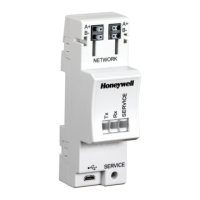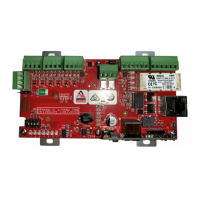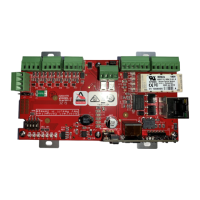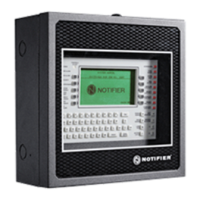Configuration Parameter Definitions
Tuning Parameters Set Up Group
Release M DR4500A Classic Series Circular Chart Recorder With or Without Control Product Manual 101
April 2017
Upper Display
Range of Setting or Selection
0.1 to 1000%
or
0.1 to 1000
PROPORTIONAL BAND is the percent of the range of
the measured variable for which a proportional recorder
will produce a 100% change in its output.
GAIN is the ratio of output change (%) over the
measured variable change (%) that caused it.
G =
100%
PB%
where PB is the proportional band (in %)
If the PB is 20%, then the Gain is 5. Likewise, a 3%
change in the error signal (SP-PV) will result in a 15%
change in the recorder's output due to proportional
action. If the gain is 2, then the PB is 50%.
Used with control algorithm PID-A or PID-B.
Defined as "HEAT" Gain on Duplex models for
variations of Heat/Cool applications.
The selection of Proportional Band or Gain is made in
the control parameter group under prompt
"PBorGAIN."
0.08 to 10.00 minutes
0.08 or less = OFF
RATE action affects the recorder's output whenever the
deviation is changing; and affects it more when the
deviation is changing faster.
Used with control algorithm PID-A or PID-B.
Defined as "HEAT" Rate on Duplex models for
variations of Heat/Cool applications.
RSET MIN = RESET IN MINUTES / REPEAT
RSET RPM = RESET IN REPEATS / MINUTE
RESET adjusts the recorder's output in accordance with
both the size of the deviation (SP-PV) and the time it
lasts. The amount of the corrective action depends on
the value of Gain. The Reset adjustment is measured as
how many times proportional action is repeated/minute.
Used with control algorithm PID-A or PID-B.
Defined as "HEAT" Reset on Duplex models for
variations of Heat/Cool applications.
The selection of minutes per repeat or repeats per
minute is made in the control parameters group under
prompt "MINorRPM."
–100 to +100
(in % output)
MANUAL RESET is only applicable if you have control
algorithm PD WITH MANUAL RESET. Because a
proportional recorder will not necessarily line out at
setpoint, there will be a deviation (offset) from setpoint.
This eliminates the offset and lets the PV line out at
setpoint.
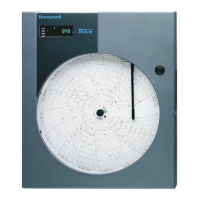
